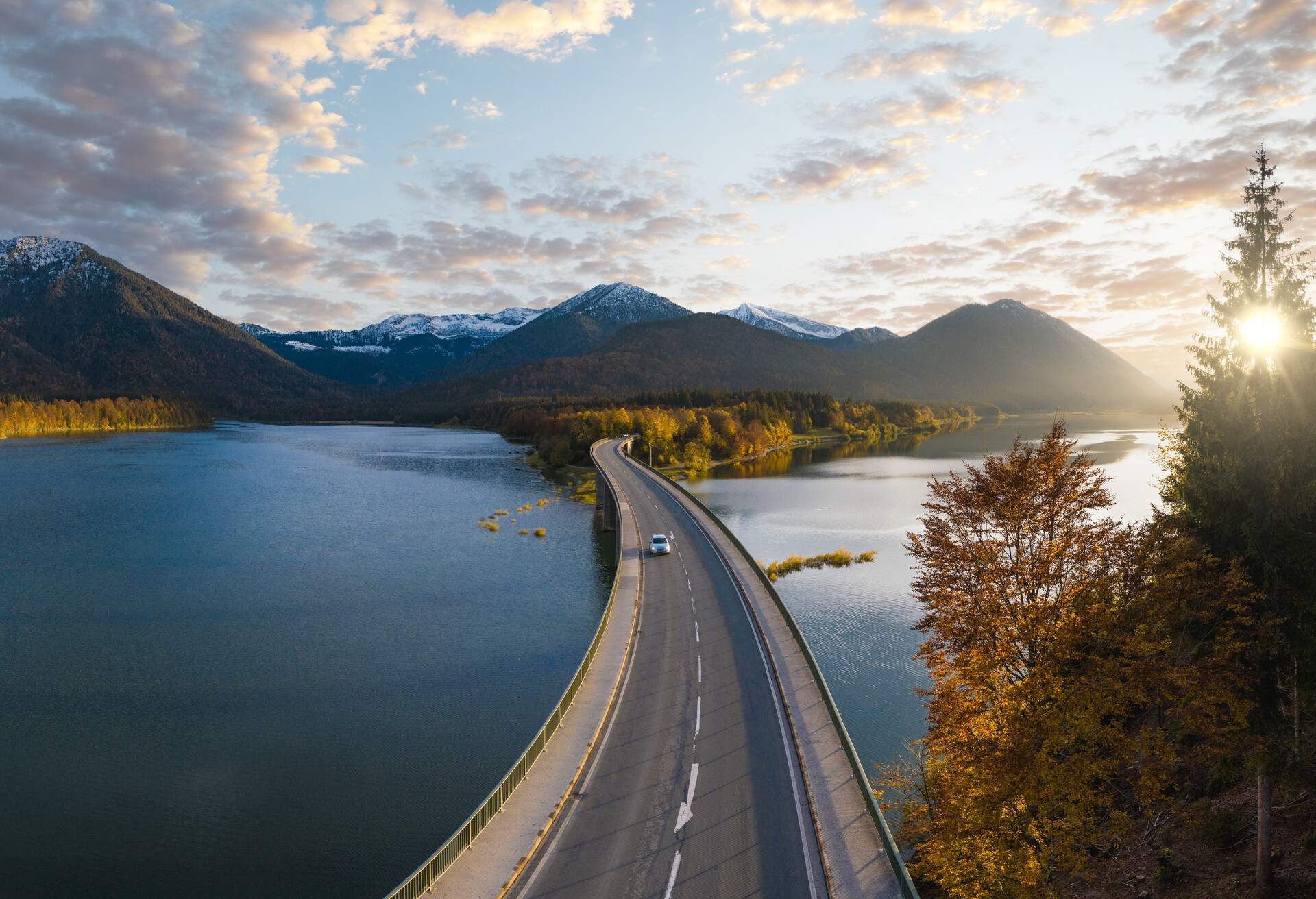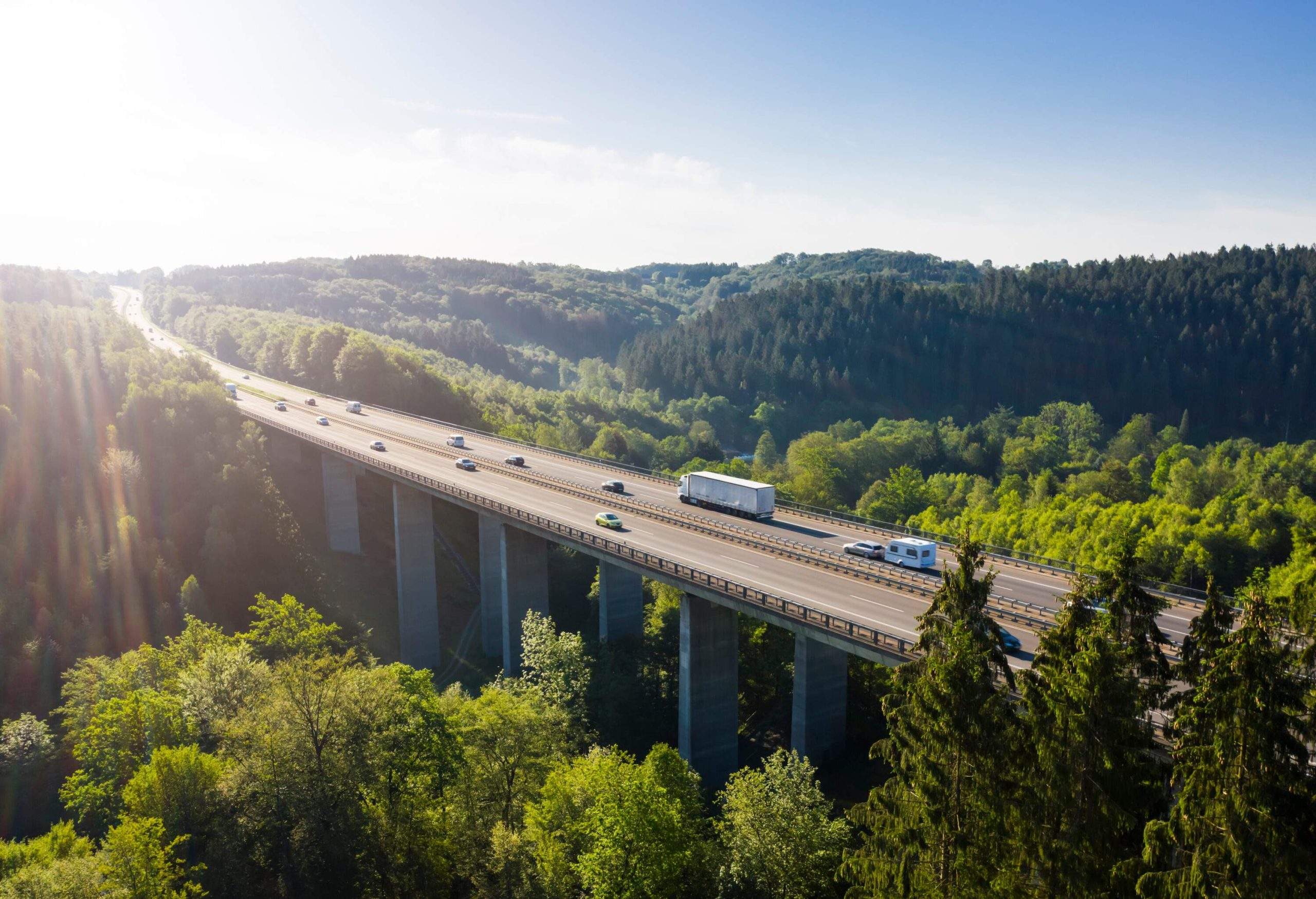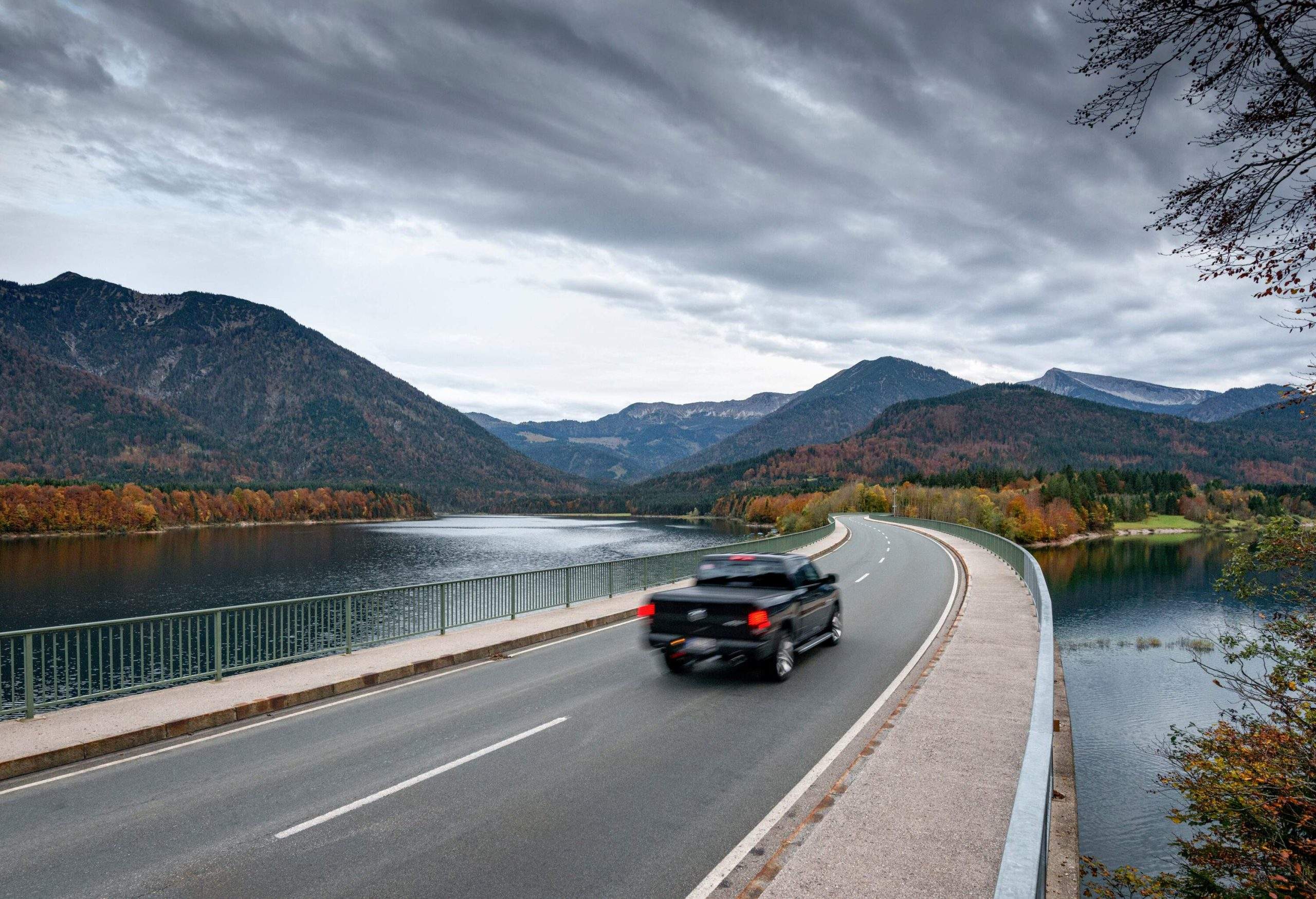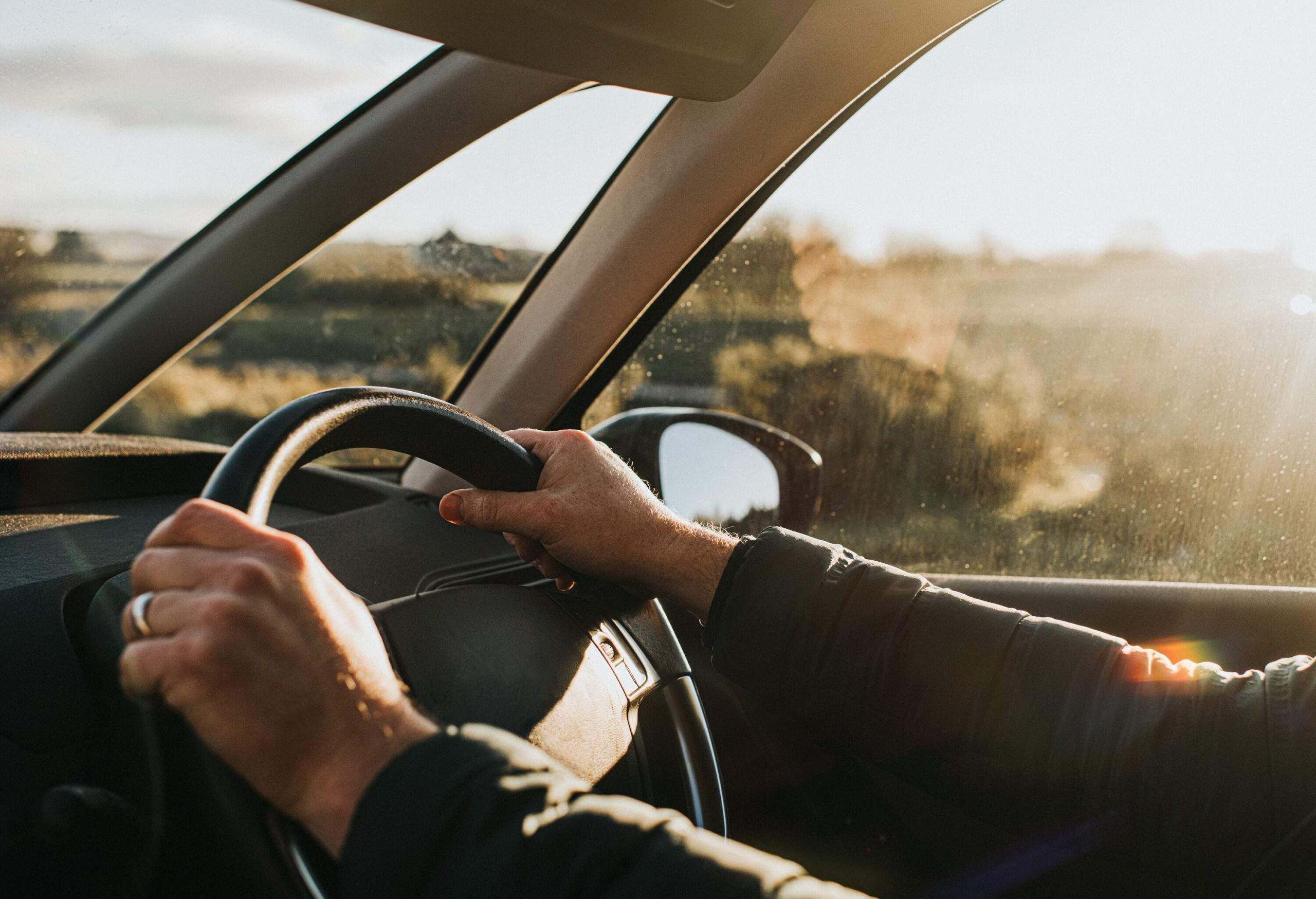With its vast network of well-maintained autobahns, scenic country roads, and twisting mountain passes, driving in Germany is great fun. If you’re planning a road trip, it’s important to know which documents you need and what the driving requirements in Germany are. After years of living there and renting plenty of cars, here’s my guide to everything you need to know.
What you need to know before driving in Germany
If it’s your first time driving in Germany, there are some simple things to know before you go. By having the right documents and equipment in the car, you’ll ensure to stay on the right side of the law.
Mandatory driving documents
You must be at least 18 years old with a valid driver’s license to drive in Germany.
Mandatory equipment for your car
In addition to these documents, you also need to keep certain safety equipment in your car:
- High-visibility jackets
- A warning triangle
- A first aid kit
- Headlight beam deflectors. Most modern cars allow you to adjust headlights manually but if not, you can add deflector stickers
- If you’re going to be driving in wintry conditions, you must have winter or all-season tyres fitted on your car
Rental cars should come equipped with these items as standard, but it’s always a good idea to check.
Renting a car in Germany
Renting a car in Germany is pretty simple, but as with any car rental, there are some tips and tricks that can make it easier – and cheaper! These focus on short-term rentals, but if you’re staying for longer, you should also consider a long-term rental.
What you need to rent a car in Germany
To rent a car in Germany you must be at least 18 years old. Some car rental companies impose a minimum age of 21 though, so always check before you book. You’ll need:
- A valid driver’s license
- Your passport for proof of ID
A credit card for the security deposit – lots of car rental companies don’t accept debit cards for this.
How to get the right type of car insurance
When you book a rental car, you need to have insurance. This is one of the prime areas where rental car companies love to part you from your money. Accordingly, there are usually several different insurance options, so it’s important to know what each covers you for.
- Most car rental companies include Third Party Liability (TPL) in the cost of your booking. This covers you for death, damage or injury to a third party in an accident you’re liable for.
- Collision Damage Waiver (CDW) is also usually included. This always comes with an excess payment in the event of damage, and that can vary depending on how much you’re paying.
- Loss Damage Waiver (LDW) includes CDW and Theft Protection (TP), so the replacement cost is covered should the car be stolen.


Rules of the road for driving in Germany
In Germany (and all of mainland Europe), you drive on the right and overtake on the left. Opposite to countries like the UK, this means at junctions you should look and give way to those on the right. When entering a roundabout, traffic already on the roundabout has right of way.
Minimum driving age
The minimum driving age in Germany is 18 years.
Highways and toll roads
You don’t have to pay tolls when driving in Germany in a private car on any roads. Tolls are usually reserved for vehicles that weigh more than 7.5 tonnes being used to transport goods.
Blood-alcohol limits & drunk driving
The maximum Blood Alcohol Content (BAC) level allowed in Germany for drivers of private vehicles is 0.05%. If you’re under 21 or have held your license for less than two years though, the alcohol limit is 0%. This is lower than in the US and applies to both German and international drivers.
Child seat regulations
Any children aged three years and younger must be in a child seat at all times when traveling in the car. Children from three to twelve years and who are under five feet (or 150 cm) tall should be in a child seat or child restraint. If you don’t have one then you can use the car seatbelt or another approved safety device to keep them secure.
Parking in Germany
Parking, especially in cities, can be a bit of a minefield with confusing signage and unrelenting parking officers. If your car is stationary for more than three minutes, it’s considered parked. As a general rule, you’re only allowed to park on the right side of the road unless it’s a one-way street wide enough to park on both sides.
If you need to pay but the parking meter is out of order, you must display a parking disc. If you see a white square with a parking disc in the corner then you must display your parking disc. The words ‘Bewohner mit Parkausweis Nr. … frei’ indicates a residential parking spot. These have additional restrictions to the times you can park there, which are usually shown on the street signs.
Parking is prohibited where you see a C19 sign, within five meters (16 feet) of pedestrian crossings or within 10 meters (33 feet) of a traffic light. You’re also not allowed to wait where you see a C18 sign or in narrow streets with insufficient visibility.
Disabled parking is free for up to three hours in a residential spot or restricted parking zone, and for an unlimited time in metered spaces.
Fuel & electric charging
Gas stations typically offer unleaded fuel both in 95 octane (E10) and 98 octane, diesel, LPG and electric charging. You may find older and rural gas stations don’t include electric car charging points.
You can pay with cash or credit cards at most gas stations. Keep in mind that unless you’re on the motorway or in a big city, most gas stations are only open from 8 am to 8 pm.
Can I drive in Germany with a US license?
Yes, you can drive for up to six months in a 12 month period using your valid American driver’s license. If you plan to stay longer, you’ll need to exchange your US license for a German Führerschein, which comes with its own set of challenges.
Conclusion
Germany is a great country to drive in. Its excellent road network combined with spectacular landscapes make it road trip heaven. Renting a car is straightforward and there are service stations everywhere.
If a road trip isn’t your thing, Germany is also fantastic to explore by train. From its magical cities to its spectacular forests, there are plenty of amazing places to visit.




